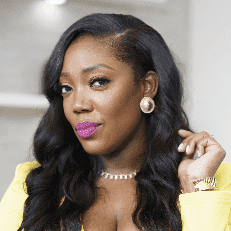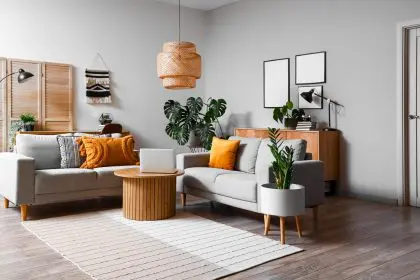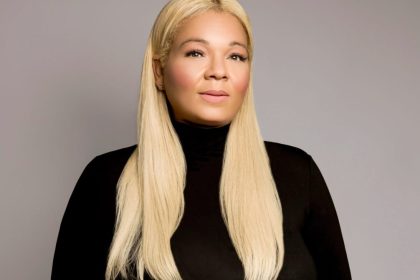Press play above to view interview in its entirety.
In automotive design, there are masterpieces that transcend mere function, embodying elegance and innovation with every curve and contour. At the pinnacle of this artistry stands the Cadillac CELESTIQ, a meticulously handcrafted luxury vehicle that redefines the boundaries of automotive excellence. We recently had the privilege of delving into the visionary mind behind this automotive marvel, Erin Crossley, design director, Cadillac CELESTIQ, for rolling out’s Design & Dialogue.
The 2024 Cadillac Celestiq. (Photo credit: Courtesy of Cadillac)
Crossley’s journey to this esteemed position is as captivating as the vehicle itself. From her early days as a color and trim designer at General Motors to her ascent to the helm of Cadillac’s flagship vehicle, her trajectory exemplifies the power of seizing unexpected opportunities and embracing the unknown. With over two decades of experience and a passion for pushing boundaries, Crossley brings a unique blend of creativity, strategic thinking, and unwavering dedication to her role.
During her interview, we explored her remarkable journey and the intricacies of crafting the Cadillac CELESTIQ. We gained insight into the fusion of artistry and engineering that defines Cadillac’s pursuit of luxury reimagined. We also embarked on a voyage into the world of automotive innovation and uncovered what makes Erin Crossley not only a ‘Sister with Superpowers’, but a trailblazer who is shaping the future of American luxury.
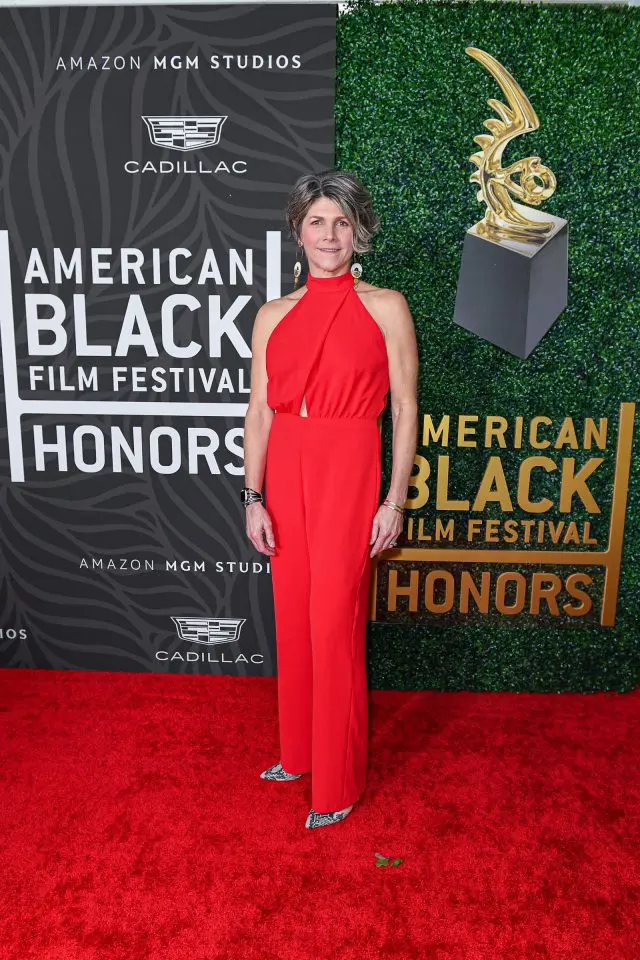
We’re happy to have you here, especially on the heels of Women’s History Month, as you are quite the history maker. Briefly walk us through your journey of becoming the design director for the Cadillac CELESTIQ.
It’s been a pretty exciting journey, and I always like to say it’s one that I could have never predicted as a young designer starting out at General Motors Design. I actually started out working as a Cadillac color and trim designer some 23 years ago, fresh out of design school. I could have never really plotted this out. It was something that I just kind of happened upon.
When I was in school, I thought I wanted to be a car designer, and so that was kind of in my original plan. I recall saying, “Oh, I want to go to art school, and I think I want to design cars.”
I started my education in industrial design, and about a year into it, I was like, “Hmm! When do we start designing the cars?” Because we were doing all kinds of things and probably learning the fundamentals, which I’m sure are important. And I was like, you know, this just isn’t working for me. It’s not feeling natural. So, I made a shift in my major to something called surface pattern design, which is a lot of hand-pattern designing: think, upholstery wall coverings, a lot of painting by hand. It was just a very hands-on art that I loved, and I kind of forgot about automotive. I was like, “Yeah, it would have been cool. But maybe it’s not my thing.”
General Motors actually came to interview at my university. I remember the sign, it said they ‘didn’t want to just see industrial designers’. So, I said to myself, “Well, hey, you know you never know. So, I’ll sign up for an interview and see what they have to say,” and I brought my portfolio. I had an interview with their team, and they asked me, “Oh, have you ever heard of color and trim design?” I hadn’t. So I was like, “Oh, tell me more about that.” And that kind of started this journey to eventually becoming a color and trim designer right after I graduated from school. It immersed me in this different side of automotive design that was much more about color, materials and textures.
I kind of grew through that organization and design, eventually fast forwarding to over 20 years, and Cadillac starts to embark on this flagship vehicle, where colors and materials and craftsmanship are paramount to the design. Fortunately, my leadership tapped on my shoulder, and said, “Hey, we’d like somebody to head up the design for this vehicle. We think you’d be well suited for the role. Do you want to do it?”
If there’s one thing I’ve learned in my career with anything that has been really significant, was that it was always something that I was least expecting, and that I was most scared about.
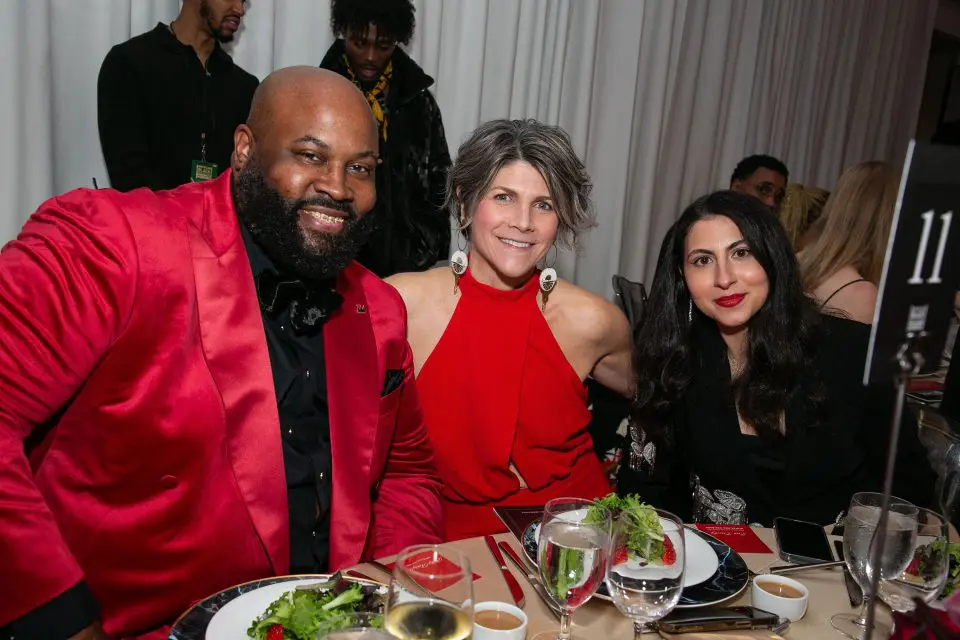
Wow! I love that you say yes! My 2024 motto is, “Say ‘yes’ to the adventure!” And that’s in all aspects of life. When you say yes, you get the unexpected and you become a history maker. You do those things that catapult you into places and spaces that you never would have guessed. So, congratulations to you.
As you were telling your story, I heard you say that you actually wanted to be an auto designer. However, when you were a little girl, did you play with cars?
I have always have loved cars. Both my parents are car enthusiasts. I have loved the art of the automobile, not necessarily the mechanics of it, but I have always viewed cars as an art form. Like, I said my parents were really into cars. We went to car shows when I was a kid, and mind you, very small car shows. I’m from a very small town in upstate New York. It was just kind of something that was part of the things that I was looking at as I was growing up. I also loved art. That was always my favorite class in school. I loved to draw on paint cars.
When I was thinking in terms of wanting to go to art school, I was also thinking, but I want to have a career, so I don’t want to be an artist, so to speak. I wanted to use creativity and art as a means to a creative career that I that I can really enjoy.
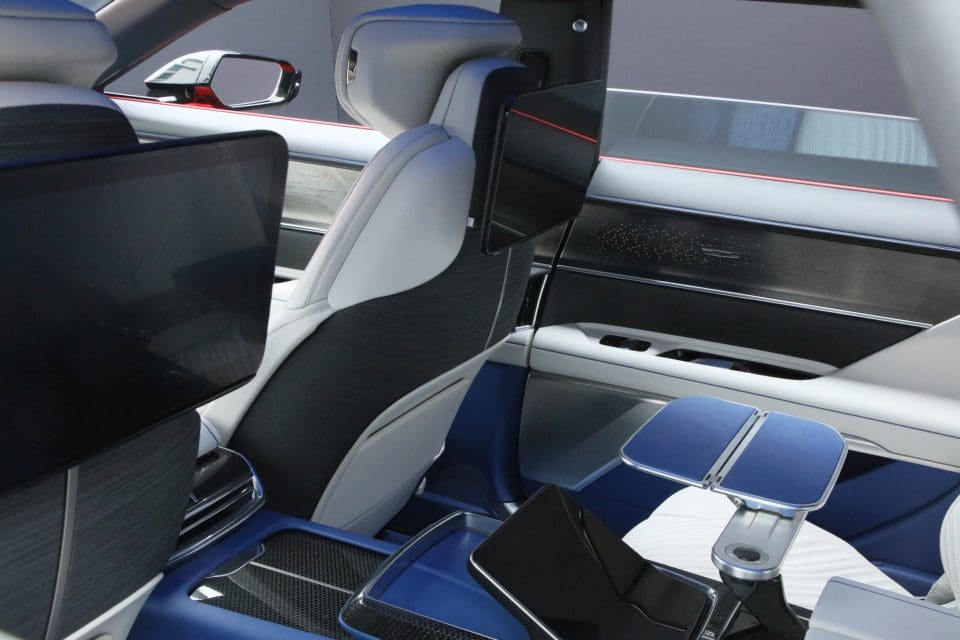
And what a wonderful career that you happened upon. Now, here you are at the forefront of automotive innovation. You’re currently the design director for the Cadillac CELESTIQ. Can you share a time and/or experience in your career that ignited this passion? What was that spark that said, this is exactly what I was meant to do?
Wow! That’s a really good question. I don’t really know if it was any one specific moment in time. When they described for me what the color and trim role was about, I thought it’s all of the things that I love about art and design: it’s colors, it’s textures, it’s materials. And I think one of the things that I loved about it very quickly was it was so multifaceted that every day was different.
You’re working with so many different colors, materials and forms of creative expression. But, it’s also multifaceted in terms of the teams that you’re working with. So, it’s not solely working within design. You’re working with marketing teams and engineering teams. It was just so rich and [full of] diverse experiences. You were never bored. There was always something new and exciting to learn. It was something that felt really natural to me from the moment I started in the job.
As you started leading these teams and transitioning into leadership roles, it required more of a blend of the creativity, the vision, and strategic thinking. How has your previous experiences and influences shaped your approach to design leadership, particularly in guiding development of this groundbreaking vehicle, the CELESTIQ?
Leadership is about being able to bring many elements together, whether it be elements like physical elements of a vehicle, elements meaning a lot of people, or a lot of different departments. It’s being able to guide a team and bring everybody together around a common cause.
What I learned through my role in color and trim was that everybody had thoughts on colors and materials, and what looks good and what goes together, what’s on trend, what isn’t on trend. And as a color and trim designer, it was very heavily trying to bring people together around a common vision, to support the vision of the program, and being able to build that network to negotiate with. You hear what other people’s thoughts are, then demonstrate to them that you’re listening, but you also have to bring them around to a common cause. So, I think just the nature of the color and trim role of being able to manage that kind of multifaceted project and pull all of the elements of the vehicle together around a common theme helped.
In my mind, this is a team sport. I always get a little anxious when people credit me with the CELESTIQ because it’s like, “Oh, I am one of many.” Yes, I’m at the helm, but I really could not do it without the absolute, incredible team of people that are part of bringing this vehicle to life.
I love that. Congratulations to you and your team for beautifully crafting this vehicle. It is definitely amazing.
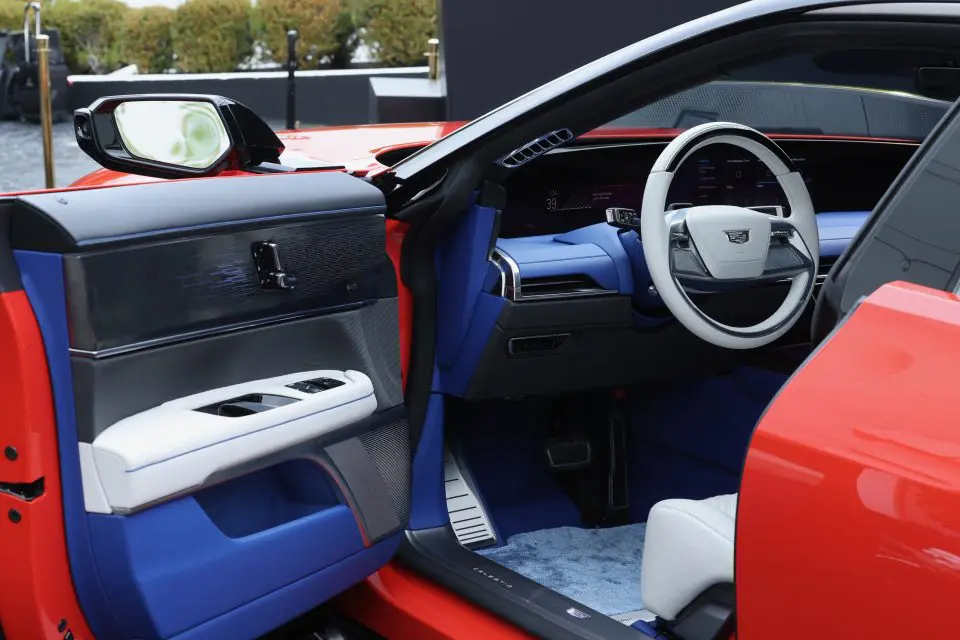
I want to stay here in terms of being a trailblazing woman, because that’s what you are. But you’re in a traditionally male-dominated industry. There’s no doubt that your career, your journey comes with a lot of challenges and triumphs. Can you shed some light on at least one of the hurdles that you faced along the way, and how you navigated that hurdle to achieve success in your career?
Yes. I feel in a lot of ways that I’ve been very fortunate in my career path in the sense that the color and trim studio is probably the most female-dominated organization in the automotive design world. I was extremely fortunate to have a very strong female leader from the start of my career. We grew a mutual level of trust, and she really advocated for me. She was a champion for me. I think that was very beneficial for me. She gave me that first opportunity that I really wasn’t expecting. It was super-scary when she actually sent me to Australia to head up the color and trim studio. I wasn’t expecting it. I didn’t think I was ready for it. And that was a really challenging role because although I still had a connection to her, I was away from being under her wing. I had to go out there and lead. I was one of very few female leaders down there. I was a new leader. I was foreign to them and that was hugely challenging for me. When I moved down there, my first son was only a year old, so I was also a new mom starting this new job in a foreign place; in my very first leadership role; on the other side of the world. But honestly, that role was such a turning point for me.
I think another part relies a lot on creating this network and getting others to trust your judgment. A lot of those people, whose trust that I had to earn, were men in other organizations. I was able to create some amazing allies. A lot of these chief engineers, very high-level individuals and other roles, started advocating for me because I had built this level of trust with them. A lot of business is very much “people-based.” And it’s about “getting” people, especially when you work in a field that’s highly subjective. You need to get people to trust that your subjective opinion is the superior subjective opinion, or at least that [your superior subjective opinion] comes from a place of expertise. It’s not just a frivolous, …because I like blue type of space. There’s actually reasoning behind it.
Yes, reasoning, and credentials, and education, and knowledge, and, like you, said expertise. That’s always such a delicate balance when you are working in both an industry that is male-dominated as well as highly subjective. Kudos to you for garnering that respect from your colleagues, because that’s huge.

Let’s shift to The American Black Film Festival Honors that just took place in March of this year. You were down there with the Cadillac team as well as the CELESTIQ.
Tell us more about that showcase and about the significance of this event. Why was is it important to have the CELESTIQ down there as well as at similar events throughout the country, the nation, the world?
I think it’s important because we really want to position Cadillac to be recognized beyond the scope of automotive. We want to position Cadillac as being recognized as an art form. We talk about the CELESTIQ being otherworldly and really having that recognition in the world of the arts, not just in the world of the automotive. We align with events like ABFF, because they are positioned to highlight excellence respective fields. Cadillac wants to be seen as achieving excellence in our field and beyond. So, I think that there is a beautiful connection there.
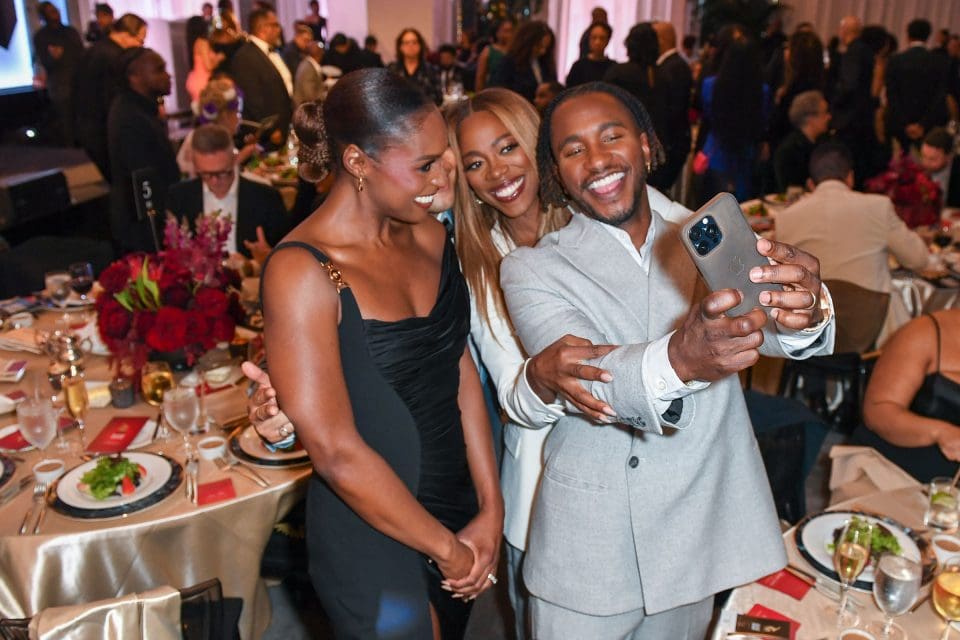
One of the things I was thinking about were the attendees. I was very star-struck, if you will, looking around that room. A part of me was like, in a very aspirational way, “… I hope that they feel awestruck or star-struck with seeing the CELESTIQ.” It’s a very unique vehicle. It’s a very bespoke flagship, one-of-a-kind vehicle that not many people have seen. It’s looking for that mutual respect from some individuals who are extremely highly respected in their field. Just as Cadillac hopes to be very highly respected in our field.
Let’s get more into the CELESTIQ and the physical design of it: being very bespoke, very custom, and otherworldly. Each of these vehicles are hand-built at GM’s Global Technical Center located in Warren, Michigan and it’s a departure from the conventional manufacturing methods. How does this approach align with Cadillac’s vision for luxury and craftsmanship?
From a luxury craftsmanship perspective, to be able to balance the precision of machines and the hand craftsmanship piece of it, the level of detail that you can only get by hand doing things is incredible. I think it’s a fine balance between the technical precision of 3-D printing parts versus the hand precision needed to beautifully align panels of an interior, so that they perfectly line up. That’s what we are able to create with the CELESTIQ, because we are hand building it at a much slower pace, with a much higher level of attention to detail, we are able to achieve things that we wouldn’t be able to achieve if we were making hundreds of these a day.

That’s remarkable! With 3-D printed parts, hand-craftsmanship, and being very bespoke, all of that speaks to how beautifully crafted this vehicle is.
I know we are running out of time. I have so many questions for you, including asking more about the 3-D printing, how many vehicles a day you build, how long does it take for each vehicle to be built? But we’re going to have to come back for another interview to get those answers.
However, I do want to leave with this last question, as Cadillac reimagines the future of American luxury, what role does the CELESTIQ play in shaping this vision? How does it reflect the brand’s identity and aspirations?
It’s really important for Cadillac to have a true flagship vehicle, a true Northstar for our brand that all products aspire to be. I think that’s why CELESTIQ is so vitally important to our brand: to elevate the brand back to this pinnacle of the design standard of the world. Something that, even though you may purchase another vehicle in our brand, there’s always that aspirational halo effect of a product like the CELESTIQ.
But there’s also that element of all of the things that we learn by doing CELESTIQ: all of the innovations, manufacturing and new materials that we learn how to work with and integrate into automotive. We will be able to take those learnings and greatly impact the brand as a whole, and have like a trickle-down effect of these things that will help elevate the rest of the products. We will keep elevating CELESTIQ, and as CELESTIQ rises, the rest of the brand will rise with it.
Thank you again for such a wonderful interview. We appreciate you being, a ‘Sister with Superpowers’, making women’s history and, birthing this beautiful handcrafted vehicle, the CELESTIQ. Before we get out of here, let us know: where can we follow your journey personally? And where can we find more information?
Absolutely. I am on LinkedIn Erin Crossley, fairly easy to find. I love to connect with people through that site. From a Cadillac perspective, you can follow our Cadillac journey on the Cadillac media site.
Thank you so much.







